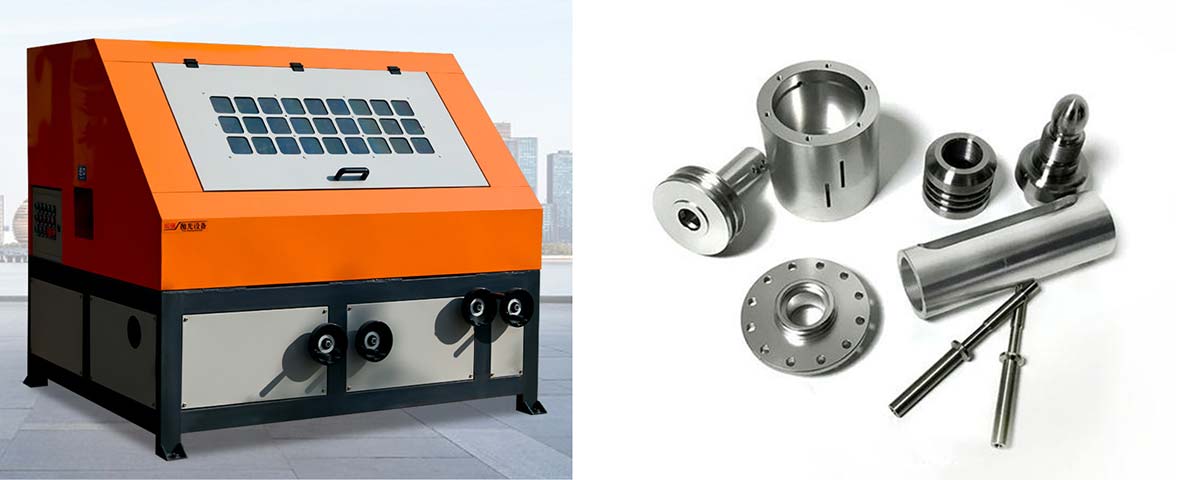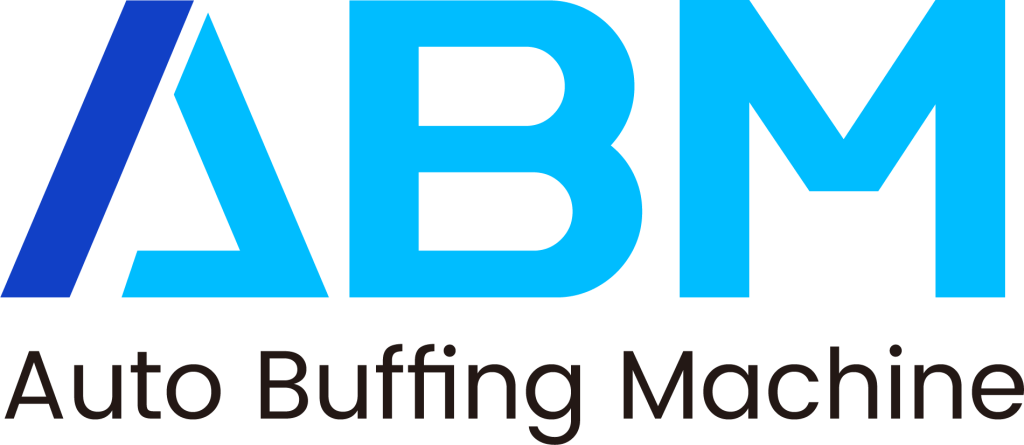

Buffing wheels serve as essential tools in industrial processes, designed to polish and finish surfaces to perfection. These wheels, often paired with a buffing machine, play a critical role in achieving smooth, reflective finishes on metals, plastics, and other materials. Their importance has grown significantly in 2025 due to advancements in manufacturing and maintenance practices.
- The aircraft industry relies heavily on buffing wheels for precise surface finishes, ensuring optimal aerodynamic performance.
- Innovations in automation and sustainable materials have further enhanced their efficiency and durability.
- The FAA and IATA project increased demand for buffing solutions as global aviation expands, driven by rising passenger traffic and aircraft production.
Buffing wheels remain indispensable in industries requiring high-quality surface treatments, from aerospace to automotive manufacturing.
Key Takeaways
- Buffing wheels are important tools for making surfaces smooth and shiny.
- Industries like aerospace use them to make surfaces safe and strong.
- New buffing wheels use green materials and better technology to last longer.
- Machines now help with buffing, saving time, money, and workers.
- Custom buffing tools help industries polish well and stay eco-friendly.
What Are Buffing Wheels?
Definition and Function of Buffing Wheels
Buffing wheels are circular tools used in industrial and non-industrial applications to polish and finish surfaces. These wheels, often mounted on a buffing machine, are essential for achieving smooth, reflective finishes on materials like metals, plastics, and wood. They play a critical role in surface finishing processes by removing imperfections, reducing roughness, and enhancing the overall appearance of workpieces.
Industries such as aerospace rely heavily on buffing wheels for polishing aircraft components. These tools improve surface quality, ensuring safety and aerodynamic performance. The demand for buffing wheels continues to grow due to increasing aircraft production and maintenance activities.
How Do Buffing Wheels Work?
Buffing wheels operate using friction, speed, and abrasives. They rotate at high speeds, typically between 5,000 to 8,000 surface feet per minute (sfm). The friction generated during the process softens the surface of the workpiece, allowing the abrasives in the polishing compound to remove imperfections.
Buffing machines ensure precise control over the operation. Safe and unsafe areas on the wheel are designated to prevent accidents. The safe area rotates away from the workpiece, reducing the risk of damage. Different types of buffing compounds, such as Tripoli for nonferrous metals and chrome rouges for stainless steel, enhance the efficiency of the polishing process.
Benefits of Using Buffing Wheels
Buffing wheels offer several advantages over traditional polishing methods. These benefits include improved efficiency, durability, and environmental impact. The table below highlights the measurable benefits:
| Benefit | Buffing Wheels (FAB) | Traditional Methods |
|---|---|---|
| Compound Consumption | Up to 90% less | N/A |
| Buff Life | Up to 35% longer | N/A |
| Surface Finish | Lower Ra (1 to 5 microns) | N/A |
| Finish Consistency | Higher consistency | N/A |
| Buff Durability | Tear resistant & waterproof | N/A |
| Maintenance | Lower compound consumption reduces plugging | N/A |
| Cleaning Requirements | Minimal residue reduces cleaning needs | N/A |
| Health & Safety | Less airborne compound | N/A |
| Environmental Impact | Reduced waste streams | N/A |
These advantages make buffing wheels indispensable in industries requiring high-quality surface treatments. Their ability to deliver consistent results while minimizing waste and maintenance needs underscores their importance in modern manufacturing.
Types of Buffing Wheels

Buffing wheels come in a variety of materials and designs, each tailored to specific polishing and finishing tasks. Understanding the different types of buffing wheels helps industries select the most effective tools for their processes.
Material-Based Types of Buffing Wheels
Cotton Buffing Wheels
Cotton buffing wheels, often made from muslin, are ideal for final polishing tasks. Their soft texture allows them to collapse easily, making them suitable for reaching awkward or intricate areas. These wheels are commonly used with polishing compounds to achieve a high-gloss finish on metals and plastics.
Sisal Buffing Wheels
Sisal buffing wheels are made from natural fibers and are known for their aggressive cutting action. They are particularly effective on ferrous metals, such as steel, and soften slightly when exposed to heat. This makes them a popular choice for heavy-duty polishing tasks in industrial settings.
Felt Buffing Wheels
Felt buffing wheels are dense and durable, offering excellent control during the finishing process. These wheels are often used for precision polishing tasks, such as in the jewelry industry, where achieving a mirror-like finish is essential.
Design-Based Buffing Wheels
Spiral Sewn Buffing Wheels
Spiral sewn buffing wheels are considered the workhorse of polishing wheels. Their tightly stitched design allows for greater pressure, making them effective for cutting and polishing metal surfaces. These wheels are commonly used for mirror polishing tasks, such as on knife blades and axe heads.
Loose Cotton Buffing Wheels
Loose cotton buffing wheels provide exceptional flexibility, making them ideal for polishing detailed surfaces and intricate crevices. Their ability to “mush” or collapse enables them to adapt to the shape of the workpiece, ensuring a high-quality finish. Larger loose cotton wheels can also enhance surface speed, improving efficiency.
Convolute Buffing Wheels
Convolute buffing wheels are designed for durability and consistent performance. Their layered construction ensures uniform abrasives distribution, making them suitable for both polishing and light deburring tasks. These wheels are often used in automated buffing machines for high-volume production.
Specialty Buffing Wheels
Flap Buffing Wheels
Flap buffing wheels feature aluminum oxide abrasives, which enhance their polishing capabilities. Their flexibility makes them suitable for light deburring and polishing tasks on non-ferrous metals, such as watch bands. They are also effective for achieving a satin finish on steel surfaces.
Abrasive Buffing Wheels
Abrasive buffing wheels differ from traditional buffing wheels by having abrasives strongly attached to their surface. This design improves material removal efficiency, especially on harder surfaces. Their higher grit count allows for precise handling of materials, making them indispensable in industrial finishing processes.
Advancements in Buffing Wheels in 2025
Innovations in Buffing Materials
Eco-Friendly and Sustainable Materials
The shift toward eco-friendly materials has transformed the buffing industry. These materials outperform traditional options by offering:
- Greater energy efficiency during production.
- Reduced carbon footprints in industrial processes.
- Enhanced durability, providing better insulation and longer lifespans.
The growing demand for sustainable practices has driven this change. For instance, the green building market expanded from $75 billion in 2020 to $83 billion in 2021, reflecting increased awareness. Buffing wheels made from sustainable fibers now align with these trends, ensuring clean and burr-free metal surfaces while supporting environmental goals.
Enhanced Durability and Performance
Modern buffing wheels integrate advanced materials like premium silicon carbide abrasives. These innovations improve durability and ensure consistent performance across various applications. Norton FAB buffing wheels, for example, embed abrasives directly into the wheel, eliminating the need for a polishing compound. This design enhances productivity by reducing wheel changes and cleanup time, making them ideal for high polish finishes in industrial settings.
Technological Advancements in Buffing Wheels
Integration with Automated Systems
Automation has revolutionized the use of buffing wheels in industrial environments. Key advancements include:
| Key Advancements | Description |
|---|---|
| Machine Flexibility | Systems adapt quickly to different tasks. |
| Improved Quality | Consistent finishes enhance product standards. |
| Cost Reduction | Lower finishing costs and better material usage. |
| Safety Compliance | Enhanced operator safety and regulatory adherence. |
| Efficient Handling | Optimized scheduling and inventory management. |
| Labor Shortage Solutions | Automation addresses skilled labor shortages. |
These systems, when paired with a buffing wheel for grinder or angle grinders, ensure precision and efficiency in the finishing process.
Smart Buffing Wheels with Sensors
Smart buffing wheels equipped with sensors represent the next frontier. These tools monitor wear and performance in real-time, ensuring optimal operation. By integrating with automated systems, they enhance efficiency and reduce downtime, making them indispensable for practical applications in industries like aerospace and automotive manufacturing.
Industry Trends in Buffing
Precision Polishing Techniques

Precision polishing techniques have redefined metal finishing methods. These methods achieve nanometer-level surface roughness, offering unparalleled accuracy. Unlike traditional polishing, laser and ion beam polishing avoid mechanical stress, making them suitable for complex shapes. Robotic polishing further automates the process, reducing human error and improving efficiency.
Customizable Buffing Solutions
The demand for customizable buffing solutions has surged. Manufacturers now offer tailored polishing buffing wheels to meet specific industrial needs. Advanced bonding techniques and synthetic materials enhance operational efficiency, catering to diverse applications of buffing. These trends ensure that industries can achieve high-quality finishes while addressing environmental concerns.
Conclusion
Buffing wheels remain vital in achieving polished, smooth surfaces across industries. Their ability to operate at high speeds, combined with the application of specialized compounds, ensures efficient and precise finishing. Advancements in synthetic materials and bonding techniques have enhanced the durability and performance of polishing wheels, making them indispensable in 2025. Industries like aerospace benefit significantly from these innovations, especially in maintenance and production processes. Future developments, including eco-friendly materials and automation, promise to redefine the buffing process, ensuring sustainability and efficiency for years to come.
